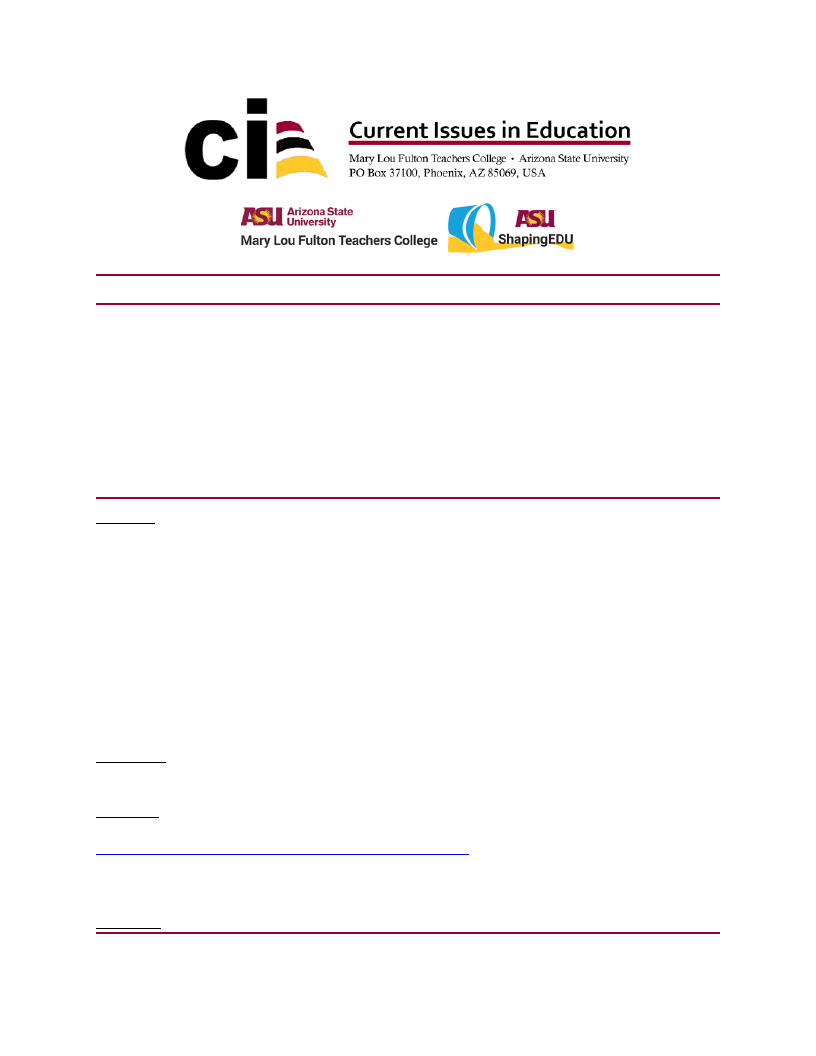
Volume 21, Issue 2
June 18, 2020
ISSN 1099-839X
Shaping the Futures of Learning in the Digital Age
Humanizing Online Teaching to Equitize Higher Education
Michelle Pacansky-Brock, Foothill-DeAnza Community College District
Michael Smedshammer, Modesto Junior College
Kim Vincent-Layton, Humboldt State University
Abstract: Online courses are increasing access to college for students who have been traditionally
left out of higher education. However, minoritized students are less likely to succeed online when
compared to their White and Asian peers. As the student population becomes more diverse,
colleges and universities have an opportunity to improve this problem by preparing faculty to
design and facilitate inclusive online learning experiences that more effectively support the needs
of all learners. This paper presents a model for humanized online teaching using a theoretical
framework influenced by Culturally Responsive Teaching (CRT), social presence, validation
theory, and Universal Design for Learning (UDL). Humanized online teaching ensures the non-
cognitive components of learning are addressed through instructor-student relationships and
community, allowing connection and empathy to drive engagement and rigor. Six humanizing
strategies with real teaching examples are discussed, in addition to goals for meaningful
professional development to support the adoption of humanized online teaching.
Keywords: online teaching, interaction, equity, minoritized students, diverse students, inclusive
teaching
Citation: Pacansky-Brock, M., Smedshammer M., & Vincent-Layton, K. (2020). Humanizing
online teaching to equitize higher education. Current Issues in Education, 21(2). Retrieved from
http://cie.asu.edu/ojs/index.php/cieatasu/article/view/1905 This submission is part of a special
issue, Shaping the Futures of Learning in the Digital Age, guest-edited by Sean Leahy, Samantha
Becker, Ben Scragg, and Kim Flintoff.
Accepted: 6/14/2020
Current Issues in Education, 21(2)
1

Humanizing Online Teaching
Introduction
Online courses are playing a more critical role in higher education, as they continue to
provide access to low-income students who do not have the privilege of being on campus full-
time. However, students from minoritized groups are less likely to succeed in online courses.
“Humanizing” is a pedagogical strategy that seeks to improve equity gaps by acknowledging the
fact that learning environments are not neutral; rather, they often operate to reinforce a
worldview that minoritizes some students. The assumption that student engagement and
academic achievement are inherent student attributes is deeply embedded in the culture of higher
education, and trickles down to the way courses are taught. This assumption privileges students
who have been cued to think they are college material, as well as those who learn effectively
through reading and writing. Humanizing recognizes that engagement and achievement are
social constructs developed through the background and experiences students bring to college
and the educational environment provided for them. Looking at engagement and achievement
through this lens nudges educators to shift the burden from students to the barriers within our
own practices. Humanizing removes the affective and cognitive barriers from online learning,
and provides a pathway towards a more equitable future for higher education that supports the
success of all students.
As online course enrollments continue to increase and serve more diverse learners,
research is needed to identify strategies that effectively foster an inclusive course climate from a
distance. While the theoretical frameworks that underpin inclusion in online courses are similar
to those in on-campus courses, how to best implement these frameworks in asynchronous online
courses presents unique challenges, remaining a murky topic for institutional leaders, instructors,
instructional designers, and instructional technologists. The research-based Peralta Equity Rubric
(2019) is one resource that institutions are beginning to use to foster inclusive learning in online
courses, and is a sign that online courses are emerging as a critical component of equity efforts.
Humanizing offers clear, practical teaching strategies for online instruction that cultivate
an inclusive online course climate better able to support the cognitive and affective differences
that co-exist within a college course. Instructor-student relationships lie at the heart of humanizing,
serving as the connective tissue between students, engagement, and rigor. Humanizing strategies
use welcoming visuals and warm asynchronous communications to establish positive first
impressions, trust between the instructor and students, and a culture of care in the online
environment. To leverage the potential that humanized online education offers for equitizing the
future of higher education, institutions must keep students at the center of decisions and invest in
professional development to prepare faculty who teach online.
Theoretical Frameworks
Humanized online instruction is informed by many well-known theoretical frameworks
including validation theory, culturally responsive teaching, social presence, and UDL.
Validation Theory
Online education is at a crossroads in higher education in the United States. To many
institutions, it appears as an “easy” way to cut costs and is used as a vehicle to increase
enrollments. Courses at those institutions are more likely to feel like they’re on auto-pilot than
taught by a real person. Other institutions are beginning to recognize that online courses have
real potential to move the needle if they are designed and facilitated effectively. As the diversity
of college students increases and the workforce continues to demand more skilled workers, the
Current Issues in Education, 21(2)
2

Humanizing Online Teaching
latter scenario will become critical for institutional leaders to recognize and value. The online
modality is distinct from classroom instruction and, as such, online courses should be designed to
leverage the full potential that the web and digital technologies bring to teaching and learning.
However, some classic elements of effective teaching transcend modality.
In the 1990s, Rendón (1994) showed that students who entered college with self-doubt
about their ability to succeed were more likely to be transformed into “powerful learners” when
they experienced in-class academic validation from a faculty member. Academic validation,
which was found to be needed most by low-income, first generation college students, was
achieved when faculty demonstrated concern, were personable and approachable, treated
students with respect, provided scaffolded learning experiences that allowed students to develop
confidence in their abilities, worked independently with students who needed support, and
provided meaningful feedback. In 2011, Linares, Muñoz et al., wrote, “When validation is
present, students feel capable of learning and have a sense of self-worth (p. 18).” Validation
theory has served as a developmental framework for institutions serving diverse student groups
for decades. Humanized instruction uses validation theory and answers the question, “What does
that look like online?”
Culturally Responsive Teaching
CRT theory recognizes that groups of students are comprised of diverse cultures and
contribute to a richer learning environment when diversity is viewed as a value. Many students
come from cultures that are collectivist in nature, meaning they emphasize relationships,
interdependence within a community, and cooperative learning (Hammond, 2014). In contrast,
higher education in the United States values an individualist culture, expecting students to
independently navigate challenging new situations, which contributes to competition and
celebrates individual achievement. When CRT is embraced, learning environments are designed
to be inclusive, valuing more collectivist cultural archetypes and ensuring all students feel
included. A humanized online learning environment embraces CRT by establishing a safe,
trustworthy course climate through instructor-student relationships and rigor through empathy
and collaboration.
In research supporting Rendón’s early findings, Palacios and Wood (2016) conclude that
“personal relationships typified by trust, mutual respect, and authentic care were necessary and
were primary conditions that foregrounded effective pedagogy” (p. 5) among African American
men in college. Palacios and Wood go so far as to suggest the idea of “relationships before
pedagogy” (p. 5); in other words, it is essential to establish a caring and trusting environment
where students believe the instructor knows and supports them so that learning can then take
place.
A supportive and trusting community of learners happens more readily when instructors
humanize themselves. As Hammond explains, “The most powerful thing we can do to create a
culture of caring is to allow ourselves to be seen as human beings, not just in our role as
teachers” (2014, p. 80). But the act of humanizing does not mean “oversharing.” Hammond calls
it practicing “selective vulnerability” (2014, p. 79). We need not share all the skeletons in our
closets, but in appropriate situations it helps students when we narrate our own struggles and,
sometimes, our own failures. Telling our stories helps establish trust and model perseverance for
students, many of whom are suffering greatly from self-doubt and fear of being exposed, a
condition known as the Imposter Syndrome.
Current Issues in Education, 21(2)
3

Humanizing Online Teaching
Social Presence
Despite evidence that validates the importance of instructor-student relationships,
research shows that interactions in online courses tend to be infrequent and often limited to
written text, which may lead students to feel isolated and unsupported (Jaggars & Xu, 2016).
More institutions have begun adopting the use of a rubric to improve the quality of online
courses; however, rubrics that address interaction generally limit the focus to quantity.
Improving the quality of interactions in an online course is what promotes social presence -- the
degree to which a person is perceived as “real” in mediated communications (Gunawardena,
1995). Social presence is important because it is shown to increase students’ satisfaction with
their instructor, interactions, and perceived learning (Tu & McIsaac, 2002; Picciano, 2002;
Richardson & Swan, 2003; Russo & Benson, 2005; Swan & Shih, 2005). Humanized instruction
encourages the use of a supportive tone in written communications and incorporating
asynchronous videos of the instructor, which have been shown to increase social presence
(Borup, West, & Graham, 2012) through their ability to convey affective indicators (expression
of emotions, use of humor, and self-disclosure).
Universal Design for Learning
UDL is a popular framework used in K12 teaching that is gaining traction in higher
education. The principles of UDL derive from neuroscience and are designed to support learner
variability. A helpful analogy that explains UDL is to imagine if all people were given a size 8
shoe and expected to wear it every day. While that seems ridiculous, UDL suggests that the
design of a learning environment operates much the same way, privileging some students and
leaving others out.
The UDL guidelines provided by CAST in 2018 support the affective, recognition, and
strategic networks of the human brain, which influence the “why,” “what,” and “how” of
learning. Humanizing strategies model these guidelines by emphasizing relationships and
community, using images and videos for instructor communications and student-student
discussions, and providing high-touch support for the students who need it most. Further, in a
humanized online course, students who have a known cognitive difference, like dyslexia, or a
disability, like hearing loss, are more likely to be supported without needing to ask for an
accommodation. This removes a barrier for students who may feel stigmatized by the need to
request an accommodation in the first place.
Why is Humanizing Key to the Future of Learning?
As the demand for online courses increases and the diversity of the online student
population grows, humanizing will become essential to support students in achieving their
academic goals. The number of postsecondary students taking online courses continues to grow
(Ginder, Kelly-Reid, & Mann, 2017): in fact, nearly 30% are taking at least one online course
(Allen & Seaman, 2017). Community college students are more likely than undergraduates at
four-year public institutions and four-year private colleges to take at least one online course,
underscoring the appeal of online learning to minoritized student groups (Ginder, Kelly-Reid, &
Mann, 2017). Overall enrollment increases are expected to continue in the following groups:
female, ethnically diverse, age, pell grant recipient, and first-to-college (Ginder, Kelly-Reid, &
Mann, 2017). The demand for online courses and changing demographics among the students
they serve bring significant implications for the future of learning. To ensure maximum success
for all, institutions will need to adapt to meet rapidly changing student needs.
Current Issues in Education, 21(2)
4

Humanizing Online Teaching
Online education matters especially to minoritized student groups because it increases
access in areas where they have historically been left to fend for themselves. Equity-minded
educators consider these students high opportunity students. But the question remains, how does
this translate to the practice of teaching? When teaching online, each name on the screen must be
recognized as a real human with a story. Faculty who teach online need to understand how and
why to unveil these stories, to design a course that values and celebrates students’ unique
experiences, and to facilitate assignments that invite students to share. One must also
acknowledge that sharing is not easy for students, especially when they feel marginalized. Online
instructors must first establish trust with learners before meaningful peer-to-peer interactions are
expected to occur (Palacios & Wood, 2016). Possessing an understanding of how to establish an
inclusive class climate at a distance will be an essential skill for online educators as the students
served by colleges and universities continue to become more diverse.
Why is Humanizing Especially Important for STEM Courses?
Humanizing undergraduate online STEM courses is of particular importance as the
United States works toward increasing the diversity of the STEM workforce (Estrada et al.,
2016). According to a study by Estrada, et al. (2016), only 14.7 percent of STEM bachelor’s
degrees were attained by minoritized students in the United States in 2010. The academic
pathway that contributes to this workforce flow is fraught with performance gaps, particularly for
minoritized students. These gaps are even greater for minoritized students in the online learning
environment (Figlio, Rush, & Yin, 2013; Hart, Friedmann, & Hill, 2018; Jaggars & Xu, 2014).
While much ink has been spilled in recent years about the link between student mindset
and academic success (Dweck, 2008; Center for Community College Student Engagement,
2019), there has been a dearth of literature that looks at how faculty mindsets affect student
performance. This is changing. Recent research shows that the beliefs faculty hold about their
students’ abilities is a concerning and largely overlooked contributor to equity gaps. A 2019
study by Canning, Muenks, Green, and Murphy comprised of 150 STEM professors and more
than 15,000 students found larger racial opportunity gaps in courses taught by faculty with a
fixed versus growth mindset about student ability. Professors with fixed mindsets tend to believe
that some students are more naturally inclined to succeed in STEM. These mindsets are
influenced by cultural stereotypes that portray White and Asian students as more innately poised
for success in math and the sciences than students from minoritized groups. As such, faculty are
more likely to use demotivating cues in their interactions with students of color. For example,
following a poor grade on a single test, a Black or Latinx student in a math course may receive
the message that “not everyone is cut out for math,” whereas a White or Asian student is cued to
“try harder next time.” Fixed faculty mindsets also work to reinforce the competitive nature of
STEM courses, which rely on summative exams designed with the expectation that students will
succeed independently.
These findings are telling, especially in light of previous research that links sense of
belonging to student persistence in STEM majors. Rainey, et al. (2018) found that students from
minoritized groups are less likely to feel they belong in STEM courses and now we have
evidence demonstrating that the way faculty teach and communicate with students is part of this
problem. In short, teaching matters. Faculty who teach STEM courses must have access to
professional development that emphasizes the value of interpersonal relationships in their
discipline (Shaffer, Marx, & Prislin, 2013) and engages students in self-reflective activities about
their own beliefs surrounding intelligence (Center for Community College Student Engagement,
Current Issues in Education, 21(2)
5

Humanizing Online Teaching
2019). It is rare for these types of growth opportunities to be provided in higher education, and
when they are, they almost always assume that faculty are teaching in a traditional classroom --
leaving online courses out, as if they aren’t even part of the picture. Humanizing is customized
for online education and holds significant potential for improving the climate in online STEM
courses by ensuring faculty possess the skills and tools to construct their presence online and
foster positive instructor-student relationships at a distance.
How Does One Equitize Higher Education through Humanized Online Teaching?
Online courses can provide welcoming and supportive learning environments for students
when faculty have a foundational understanding of equity as well as the skills and support to
design and facilitate inclusive, culturally responsive online learning environments with strong
instructor social presence. Below is a summary of six key strategies that support humanized
online instruction.
1. A Liquid Syllabus
The syllabus plays many roles in a college-level course. Often, instructors labor over
their syllabus, filling it with course policies and procedures, as well as institutional regulations.
To students, the syllabus can feel more like a list of do’s and don’ts, which can increase a
learner’s anxiety and self-doubt.
Many practitioners have reimagined new opportunities for the syllabus -- Bain explores
the concept of a promising syllabus in What the Best College Teachers Do (2004), and
Harrington and Thomas write about the transformative power of a syllabus in Designing a
Motivational Syllabus (2018). In a 2011 study, Harnish and Bridges found that a syllabus written
in a friendly tone has a significant impact on how students perceive an instructor by unhinging
the common student expectation that “faculty are unapproachable” (p. 1).
In short, a course syllabus offers many opportunities for making a meaningful first
impression with students at a moment when they are most vulnerable. And first impressions
matter to students -- in fact, they are shown to matter more than an instructor’s reputation
(Buchert, Laws, Apperson, & Bregman, 2008). In an online course, the syllabus is the first
connection a student has with an instructor, and in humanized online courses it is intentionally
designed to welcome and support students. It is written in a supportive tone and uses asset-based
language to encourage growth, cultivate hope, establish expectations for success, and recognize
the array of experiences and knowledge students bring to the class as a value that enriches
learning. But a humanized online course takes the syllabus one step further.
Humanizing involves designing a liquid syllabus that is created using a website tool
(Google Sites, Adobe Spark Page, Wordpress, etc.) that can be viewed by students without
logging in to a Learning Management System (LMS) or other secured environment (Pacansky-
Brock, 2014b, 2017). By using a tool that is native to the online environment, a liquid syllabus
responds to a student’s viewing device, rendering clearly scrollable text when viewed on a
smartphone phone -- and maximizes an online instructor’s first impression on students.
Depending on the device settings, students may also be able to make text larger and opt for a
dark view, which is easier to view in low light setting.
A liquid syllabus also provides unique opportunities for fostering social presence. A
syllabus created with a website creation tool allows instructors to embed a brief video on the
page, ensuring students have the opportunity to be greeted with a warm, smiling face and hear
supportive words prior to reading the content (more like a face-to-face classroom experience).
Current Issues in Education, 21(2)
6
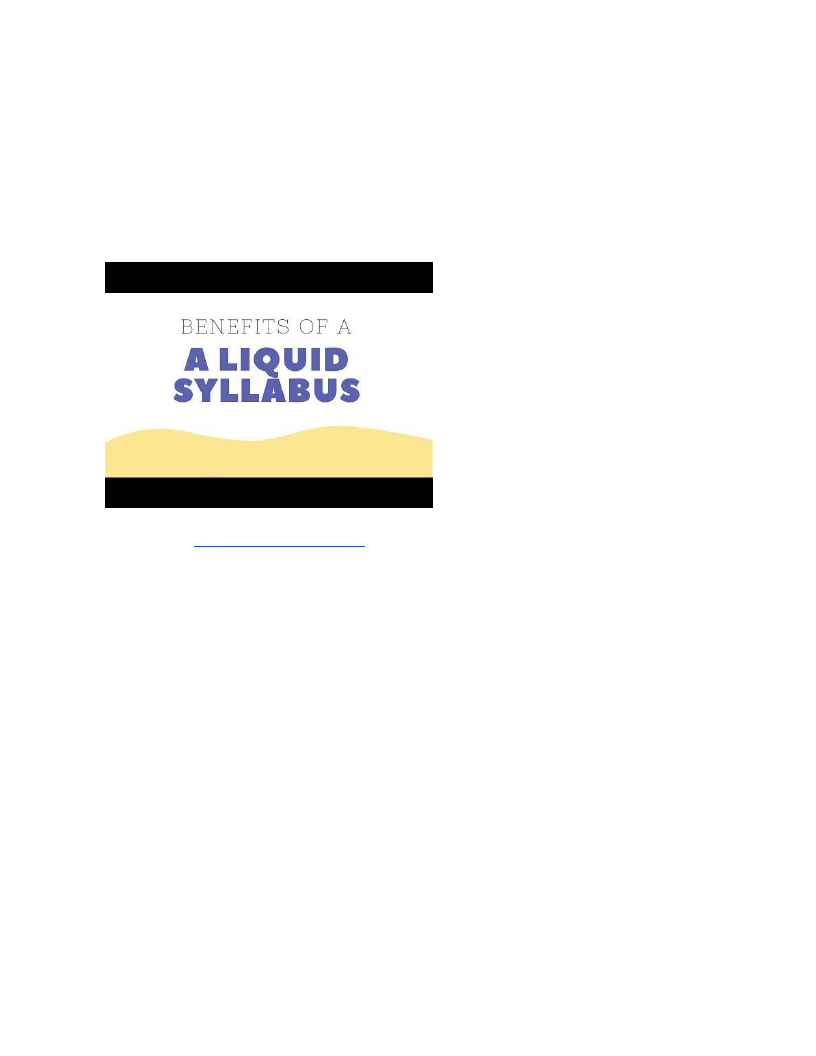
Humanizing Online Teaching
Digital images can be easily interspersed through a liquid syllabus to establish a welcoming tone
and to more effectively support the understanding of content by students from different cultural
backgrounds who represent diverse groups of people.
Instructors of humanized courses send a pre-course email to students during the week
prior to a course that includes a link to the liquid syllabus. Student who read this email on a
smartphone may click the link, be welcomed by their instructor, and have direct access to the
information they need to start day one on the right foot.
To learn more about the benefits of a liquid syllabus, view the 3-minute video below.
>
View a sample of a liquid syllabus created by Arnita Porter, faculty at West Los Angeles
College.
2. Adaptive Teaching
One of the first concerns faculty often voice when learning about humanized online
teaching is, “How can I offer a high touch learning experience when I have so many students?”
The answer to that question is illuminated through what we call adaptive teaching. While
adaptive learning technologies are designed to adapt on-the-fly to provide additional support or
challenge for students based upon their competencies, adaptive teaching is a pedagogical strategy
that helps faculty use locally sourced micro-data provided by students to identify which students
will benefit most from high-touch communications. Faculty then cultivate high-touch
communications throughout a course with these high opportunity students. To collect the
qualitative data that helps faculty identify their high opportunity students, a survey is assigned in
week one. By completing the survey, students receive their first points in the course, feel a sense
of achievement and, simultaneously, provide essential information about themselves that faculty
use to guide their teaching.
While questions on the form may vary, it is important to keep in mind that, in addition to
providing the instructor with important information, this form also conveys to students that their
instructor cares about them. Some suggested questions are listed below:
● Select your preferred pronouns from the list below.
○ she/her/hers
○ he/him/his
○ they/them/theirs
Current Issues in Education, 21(2)
7

Humanizing Online Teaching
○ Other: _______
● Which of the following describes you (check all that apply):
○ This is my first semester of college.
○ I am the first in my family to attend college.
○ This is my first time taking an online class.
○ I work more than 15 hours per week.
○ I am a caretaker for at least one person.
● This question provides students with the ability to opt out of receiving voice/video
communications from the instructor without being expected to reveal why (which may
unjustly require students to disclose a disability). I may communicate with you through
voice or video messages this semester.
○ That sounds great to me!
○ I would prefer written communications
● “In one word, describe how you are feeling about this class.” From past experience,
most students will reply with neutral (fine, ok) or positive (excited, intrigued) responses
but there are always a few students in a course that convey responses like “nervous,”
“overwhelmed,” and “anxious,” which may indicate a student is experiencing stress that
may jeopardize their likelihood of staying in the course. Responses to this question
quickly allow an instructor to identify high opportunity students who would benefit most
from the human touch. Reaching out immediately to these students with a supportive
message, delivered in video, promotes psychological safety and fosters trust, which are
the foundations of relationships. These high touch interactions in week one ensure
students know their instructor cares and reduces the sense that they’ll be on their own
throughout the course.
● “Identify one thing that may interfere with your success in this course.” This open-ended
question can transform a name on a screen into a human with a complex life. It informs
instructors about a host of issues that would otherwise remain invisible and be left out of
the teaching and learning process. Responses often include descriptions of work
obligations, learning differences, injuries, parental responsibilities, upcoming surgeries,
childbirths that will occur during the course, care for ailing family members, and recent
return from military service. Instructors collect this data in week one and reference it
throughout the duration of the course while observing student performance and
engagement. If a student does not log in one week, an instructor can reference the
students’ situation and reach out with a brief, supportive email like this one, “Hi Sarah. I
noticed you didn’t submit last week’s assignment. I remember you mentioned that you
have been caring for your mom and I thought I’d reach out and see how you’re doing.
What can I do to support you? Hope to see you back in the class soon.”
To ensure the micro-data from the survey is utilized to guide teaching throughout an online
course, instructors are encouraged to incorporate it into the roster. In Canvas, for example, the
Grades area includes an optional Notes column, which is especially useful. As participation ebbs
and flows, the notes can be referenced and updated to ensure that the instructor’s teaching adapts
to each students’ needs and that the instructor’s presence supports the growth and development
of high opportunity students. View a sample student information survey you can use in your own
online course.
Current Issues in Education, 21(2)
8
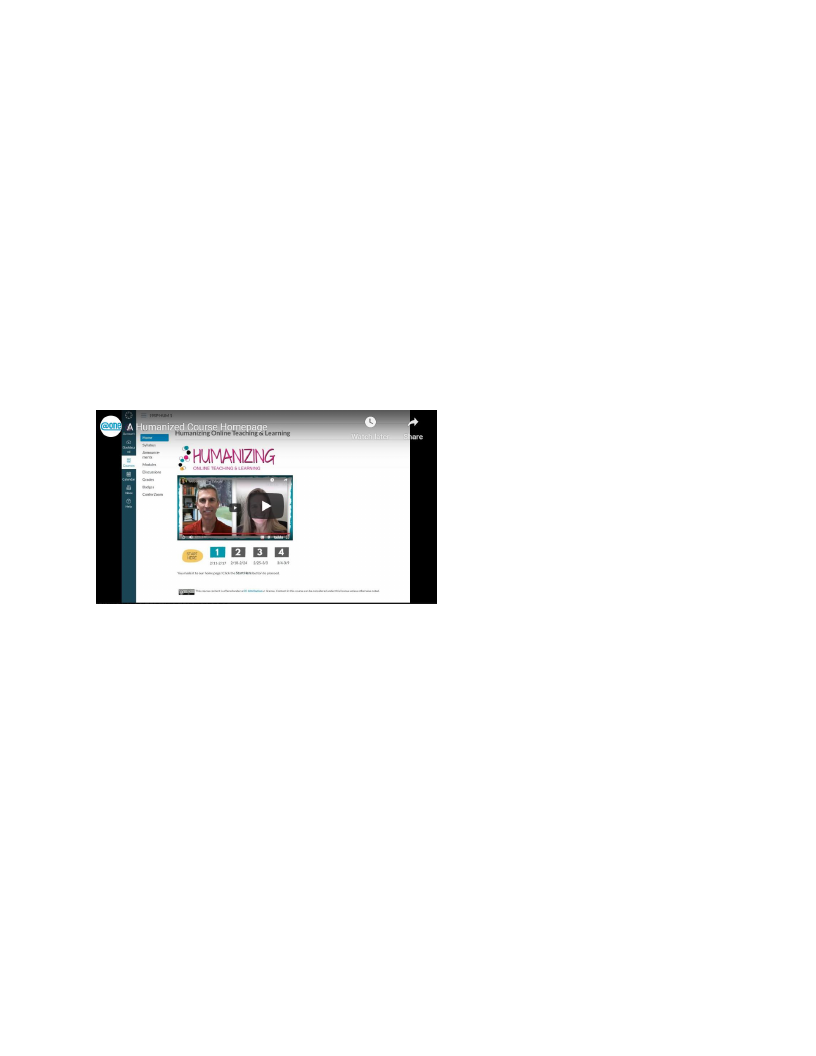
Humanizing Online Teaching
3. Visually Appealing and Dynamic Homepage
In the same way that the syllabus plays a key role in establishing a positive first
impression with students, a course homepage also influences students’ lasting perceptions about
a course. Within seconds of students’ first entrance into a course, the aesthetics and function of
the course homepage forms their perceptions about the course’s credibility and usability (David
& Glore, 2010). A visually appealing homepage that clearly communicates what to do next can
improve students’ self-efficacy and motivation in an online course. At the start of a new term, a
humanized online course greets students with a homepage that contains minimal text; a colorful
and visually appealing banner (with alt-text for accessibility); a brief, captioned welcome video
from an instructor; and a clearly labeled “start here” link to ensure students navigate to the
correct area of the course. As the term progresses, the homepage changes to reflect current
content, communicate essential information to students, and convey instructor presence.
View the video below to experience a humanized course homepage in Canvas, featuring
Mike Smedshammer and Tracy Schaelen, facilitators for the Humanizing Online Teaching and
Learning course offered by California Community Colleges California Virtual Campus - Online
Education Initiative (CVC-OEI)/@ONE.
>
4. Asynchronous Video Communications
Video is commonly used in the teaching of online courses, often as a vehicle for
delivering lengthy lectures. However, research from Massive Open Online Courses (MOOCs)
shows that online students are more likely to watch videos that are no longer than 6-minutes, and
videos with a “personal feel” may be more engaging than slick recordings made in a studio (Guo,
Kim, Rubin, 2014). Further, research shows listening to an instructor’s voice increases a
student’s sense of being connected to a community, improves retention of the spoken content,
and establishes the sense that the instructor cares about the student (Ice, Curtis, Phillips, &
Wells, 2006). In humanized instruction, video is used in line with this evidence. Instructors use
brief videos with a low-production value recorded with a simple webcam or their smartphone
and, in some cases, created with free and low-cost tools like Adobe Spark or Screencast-o-matic.
Not only do the videos explain content, they also convey an instructor’s active engagement and
presence throughout an online course. Instructors use them in announcements sent to the whole
class, in learning modules to provide embedded preview and review segments or tell a story to
connect content with the real world, and to deliver warm, personalized feedback in the
gradebook for high opportunity students (see adaptive teaching above).
In humanizing, faculty are encouraged to create videos that are off-the-cuff, unpolished,
and recorded in locations untethered from the academic workplace. When professors portray
Current Issues in Education, 21(2)
9
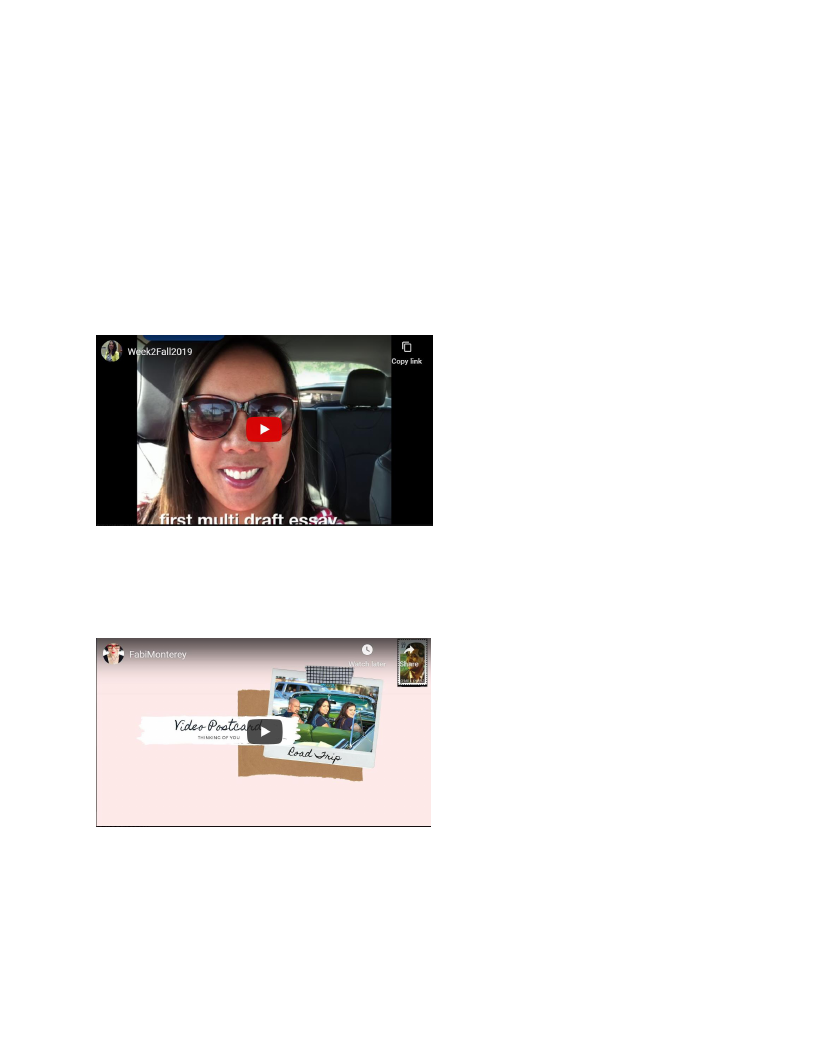
Humanizing Online Teaching
their imperfections -- the “ums,” quizzical expressions, background interruptions like a cat
jumping on the desk or a child peeping in the background, and move away from their desks to
record in their daily settings -- they become real and relatable. In other words, they become
“humanized.” Students begin to sense that their online instructor is a real person with
imperfections and a busy life, much like them. These types of similarities contribute to positive
teacher-student relationships (Gehlbach et al., 2016) by establishing psychological safety and
trust, which is especially important in the early weeks of an online course when students are
most likely to withdraw.
The video below, by Denise Maduli-Williams, who teaches English for Speakers of Other
Languages online at San Diego Miramar College, was made with Clips, a free app for Apple
mobile devices that provides auto voice-text captions (that can be edited on the fly). In the video,
Denise shows her students where to find her office on campus.
In the example below, Fabiola Torres, Ethnic Studies professor at Glendale College,
demonstrates how to use a smartphone to record a “video postcard” (a term she has coined) for
students. Torres uses video postcards to remind students that she is thinking about them even
when she is away from campus.
In the video below, Michelle Macfarlane, Agriculture professor at Sierra College, uses
Adobe Spark, a free tool, to tell a story about her life that also introduces her students to their
Q&A discussion group, which she has titled The Truckstop. Personal anecdotes like this help
Macfarlane connect with her students.
Current Issues in Education, 21(2)
10
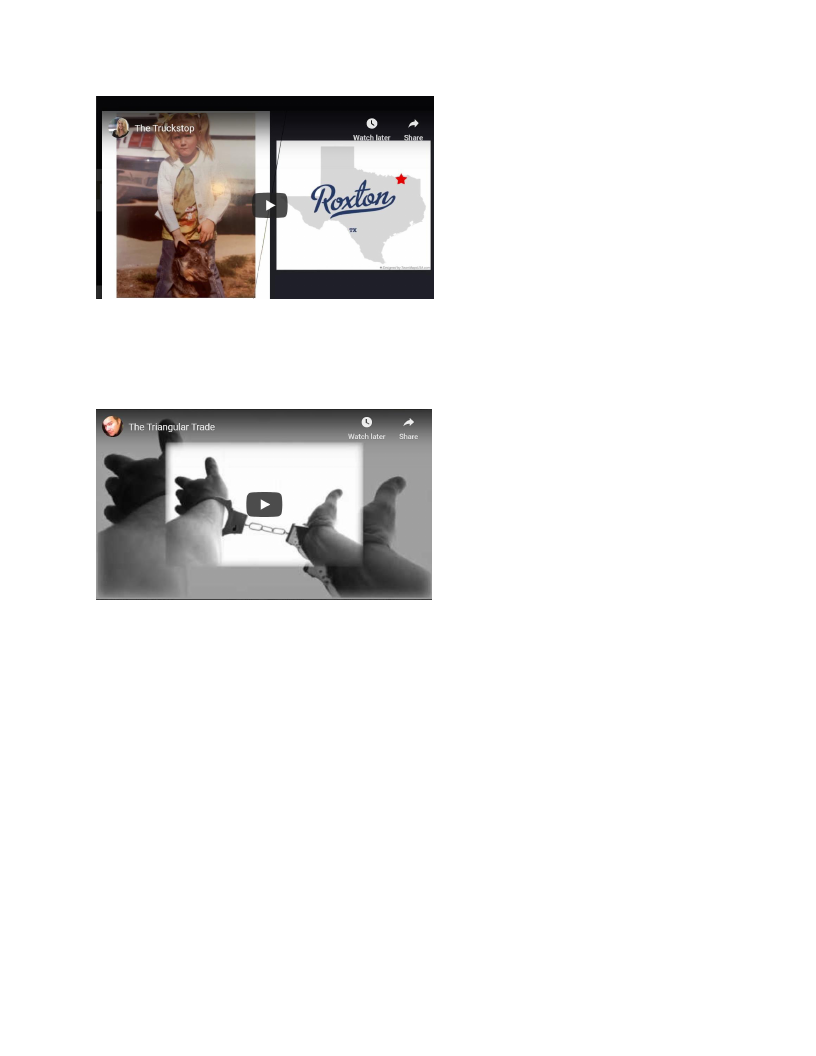
Humanizing Online Teaching
The video below, created by Matt Mooney, history professor at Santa Barbara
Community College, is included at the start of a new content module. With Adobe Spark,
Mooney visually communicates sticky topics included in the module that students are known to
struggle with.
5. Asynchronous Video Discussions
Even the most committed online faculty can struggle with feeling disconnected from their
students. Synchronous video conferencing tools like Zoom, Adobe Connect, and Skype are great,
but pose barriers to students who take online courses to accommodate their busy schedules. It is
common for online faculty to excitedly arrange a Zoom session only to have one or two students
attend. This is why asynchronous discussion tools are so important in online courses, as they
allow students to learn on their own time. But when students are only given the option to express
themselves in writing, it may be more difficult for instructors and students to bond with one
another, as textual communication lacks paralanguage, which is the non-spoken dimension of
speech that includes body gestures, intonation, speed, sounds made between words, and facial
expressions.
Further, relying on writing alone creates learning barriers for students with cognitive
differences. A student with dyslexia, for example, may comprehend a concept and be able to
articulate her knowledge verbally, while her written expression of the same concept may convey
to an instructor that she doesn’t understand. Providing multiple means of expression (and, better
yet, giving students options in how they express themselves) is a principle of UDL and a
powerful way to foster inclusivity in a course.
Current Issues in Education, 21(2)
11

Humanizing Online Teaching
Designing discussions with warm, asynchronous voice and/or interactive video
technologies like VoiceThread and Flipgrid opens new opportunities for community building and
cognition in online courses. Data from student surveys of online community college students
conducted by Pacansky-Brock (2016) showed that regular use of asynchronous voice/video tools
increased students’ sense of belonging to a community and resulted in improved verbal skills.
When students move from recording videos with a webcam to their smartphone, more
possibilities for making connections emerge. Mobile videos allow students to venture into their
own surroundings and show aspects of their environment to their peers. This feature of mobile
video can inspire instructors to design engaging prompts that encourage students to connect the
course content with their everyday lives -- like a field trip, only virtual. For example, Jaime
Hannans, a Nursing faculty at California State University, Channel Islands has her students
venture into their local communities to identify locations of automatic external defibrillators
(AEDs). Through the student-student and instructor-student interactions, the group discovered
that the AEDs were located in different locations, based upon the student’s county. Janet
Mitchell-Lambert, English faculty at Cerritos College, has her students read several poems and
then go to a location that is referenced in the poem. Students then reflected on why they selected
that particular poem, how their location connected with it, and spoke their favorite lines. Using
video in this manner not only connects course curriculum with the real world, making learning
more relevant, but it also increases opportunities for students to discover similarities with their
peers that are shown to foster relationships (Gehlbach et al., 2016).
However, asynchronous voice and video technologies can create barriers for some
students. Recording oneself places a person in a vulnerable position as it discloses more
information about a person than written communications. Instructors must be sensitive to the fact
that some students who learn online may take the course at a distance to avoid judgments that
come along with being seen or heard. This may include judgments made about a student’s
accent, the color of their skin, a physical disability, or a speech impediment like stuttering or
slurring of words. Having students use video instead of writing to express themselves may also
increase instructor bias. A 2018 study found instructor race and gender biases in online
discussions, showing that White male students receive more responses from an instructor (Baker,
Dee, Evans, & John, 2018). When students use video to express themselves, instructors must be
more vigilant about their unconscious biases.
To support all students, an instructor must take care to introduce a new technology in a
mindful manner. This includes explaining why the tool has been selected for use in the course.
This is a great opportunity to include positive feedback from past students. When students feel
included in the rationale of the design of a course, they are more likely to be willing to try
something new. Instructors should also provide students at the start of the term with a clear plan
that describes the frequency they will be expected to use these types of technologies, as well as
instructions for getting started and troubleshooting. Further, it is especially important to ensure
students are given clear instructions about how to use the mobile app for the tool, as this can be
tricky especially if the tool is integrated into the LMS. Smartphones are typically the preferred
recording method for college students. And to counteract one’s own bias, instructors are
encouraged to track the frequency of responses to all students using LMS analytics.
Using a voice or video tool for an ice-breaker activity is a good way to begin a new term
in a humanized online course. Ice-breakers that elicit information from students about their life
experiences, particularly those that link in some way with the curriculum, offer students a low-
stakes opportunity to try out a new tool while also weaving the early threads that form
Current Issues in Education, 21(2)
12

Humanizing Online Teaching
community. When possible, it is advisable to give students choices in their commenting method,
but students may feel apprehensive about recording themselves and, therefore, be more likely to
default to writing if that option is provided. Pacansky-Brock (2014a) found that students are
more willing to choose to record a voice/video over writing if all students are asked to use the
media recording in a low-stake activity with an actively engaged instructor who provides
supportive feedback to each student.
View an excerpt from Jaime Hannan’s virtual field trip with VoiceThread:
View an excerpt from Janet Mitchell-Lambert’s mobile poetry assignment with Flipgrid:
6. Wisdom Wall
Including the experiences of students within the design of a course makes learning more
relevant. To put this strategy into practice in a digital learning environment, Pacansky-Brock
(2012) encourages the use of the Wisdom Wall, a simple activity that can be applied in a variety
of ways. At the end of the course, a project, or after an exam, the instructor asks students to
reflect on their experience, identify a piece of advice for future students, and share that advice on
the Wisdom Wall. When the Wisdom Wall is shared with future students, it becomes a treasure
trove of voices with which students identify more intimately than advice from an instructor.
Also, the Wisdom Wall is a practical way to promote students’ growth-mindset. When students
recognize growth and development in their peers, they are more likely to adapt the concept to
themselves.
Instructors can use a variety of tools to create a Wisdom Wall including Google Docs,
Padlet, or a wiki page within the LMS; however, asynchronous voice and video tools like
Current Issues in Education, 21(2)
13

Humanizing Online Teaching
VoiceThread and Flipgrid allow the advice to resonate more intimately with students. View an
example of a Wisdom Wall from Michelle Pacansky-Brock’s course made with VoiceThread.
Fueling Systemic Change through Professional Development
Ensuring faculty master the skills to teach effectively will become more important as
colleges and universities attract and enroll more diverse student groups. And becoming an
effective online teacher will require innovations in faculty development that transcend face-to-
face workshops. Colleges and universities must place a priority on preparing faculty to teach
online humanized courses and be innovative in the preparation and delivery of professional
development (PD).
The California Community Colleges (CCC) system offers more for-credit online courses
than any public system in the United States. More than 20% of the roughly 2.1 million students
served by CCCs takes at least one course online (Johnson & Mejia, 2014). The CCC
Chancellor’s Office funds a statewide effort, CVC-OEI, to connect students with more high
quality and fully supported online courses across California’s 114 community colleges. To
support this initiative, a robust offering of online, low-cost PD courses, programs, and events are
provided by CVC-OEI/@ONE. Among these offerings is a 4-week course on Humanizing
Online Teaching and Learning and another course on Equity & Culturally Responsive Teaching
in the Online Environment. The following quote from a course participant demonstrates the
impact of preparing faculty to teaching online with humanized online PD:
“My presence matters so much more than I thought. I was guilty of trying to be a neutral
voice with a professional (aka sterile) presentation of content. I see now that being active,
responsive, present, and empathetic is so vital to … my students.”
There is no ad lib when teaching online. The visual feedback cues that instructors receive from
students in face-to-face instruction are not present in an online class. Presence must be
intentionally constructed, and placing faculty in the seat of an online learner with an engaged,
empathetic online instructor is the best way to begin to prepare faculty to teach online.
Professional development that preparers faculty to teach humanized online courses should be
designed with the following goals in mind:
1. Foster empathy for students. To grow into empathetic online educators, faculty must be
immersed in online learning environments themselves to experience them the way
students do. Doing so creates powerful mind-shifts as faculty recognize unexpected
challenges and find themselves reaching out to ask for an extension on an assignment. It
is not uncommon to have faculty say, “I now know what it is like to be an online
student.”
2. Model humanized instruction with one (or more) present, aware, empathetic facilitators.
Faculty who resist online teaching have likely never experienced a well-facilitated online
course. As a result, they approach their first course with the mindset that all online
courses are dry and disconnected. Every online PD experience is an opportunity to shift
faculty mindsets about the rich and rewarding potential of online teaching.
3. Empower faculty to become self-starting creators of digital content. When faculty teach
online, they need to be capable of solving their own technical problems producing their
own digital content. Most faculty teach part-time and cannot rely on support from on-
campus teaching centers. They need digital toolkits and training to be able to work
independently. Moreover, slickly produced videos and publisher-provided PowerPoint
Current Issues in Education, 21(2)
14

Humanizing Online Teaching
presentations are more likely to feel sterile to students. Creating one’s own content may
not result in Hollywood quality, but it is more likely to capture an instructors’ personal
touch and character (Guo, Kim, Rubin, 2014).
4. Provide a safe, judgment-free zone for experimentation. Feeling vulnerable in new
situations is part of being human. For college instructors, the fear of looking stupid in
front of one’s peers is especially nerve-racking and has been shown to be a factor that can
prevent faculty from teaching with technology (Herckis, Scheines, & Smith, 2017).
Professional development must recognize and support risk-taking by couching these
uncomfortable experiences within the context of growth-mindset. Facilitators of
professional development must be transparent, openly admit when they’ve made a
mistake, and share stories about their own growth with using digital tools.
5. Ensure faculty master the basics of the asynchronous video workflow. The mobile era has
revolutionized video. Like their students, nearly all faculty now have a video creation
tool at their fingertips in the form of a smartphone. Faculty who master the art of
chunking content into brief videos, recording from a mobile device and webcam,
evaluating proper lighting and sound, uploading videos to a server (e.g. YouTube),
captioning videos, and embedding them in an LMS possess critical digital fluencies for
humanizing online courses.
6. Model UDL and ensure it is embedded in the content creation process. Ensuring all
students can access content is not only a federal requirement, it is also a commitment to
inclusion. Further, providing students with multimodal learning environments will ensure
more students have what they need to succeed without needing to ask for
accommodations. UDL also cuts down on the expensive and time-consuming task of
remediating inaccessible digital content.
7. Help faculty understand how to use quantitative LMS analytics paired with qualitative
student data to recognize which students need support, when the support is most needed,
and where it is likely to have the most impact. Ultimately, faculty should use student data
to adapt their teaching to the changing needs of students throughout a course.
8. Provide a safe, judgment-free environment to experiment, make mistakes, and grow.
Instructors often feel vulnerable when asked to record their imperfect presence on video.
Faculty must be encouraged to reflect on their growth and consider the changes in how
they feel about using new tools.
9. Be designed to eliminate “PD Melt.” Faculty are most likely to make actionable changes
to their teaching during the period immediately following professional development
when. However, returning to everyday routines often undercuts even the most well-
intentioned changes. To remedy this, faculty-support peers (instructional designers,
distance education coordinators, instructional or academic technologists) must be in place
as a post-PD scaffold to support faculty with course redesign.
Evidence of the Spread of Humanized Online Instruction in California
Each year, roughly 98,000 California State University students earn undergraduate
degrees, and about 50% of them transfer from a California Community College. Through cross-
system collaborations and sharing of faculty development OERs, humanized online instruction is
gaining traction, and research will soon examine its impact on equity gaps.
In 2015, CSU Channel Islands began to offer a 2-week humanizing course as part of its
Online Teaching Preparation Program. In the first four years, 91 or about 18% of all faculty have
Current Issues in Education, 21(2)
15

Humanizing Online Teaching
completed the program, which is coordinated through CI’s Teaching and Learning Innovations
team. For a period of time, faculty from other institutions were invited to participate in the
program and offered a Creative Commons-licensed version of the humanizing course. As a result
of that collaboration, the professional development course has also been offered at CSU
Humboldt and Santa Barbara Community College.
Between 2018-2019, more than 200 faculty and staff from across the 114 colleges in the
CCC system completed the CVC-OEI/ @ONE humanizing course (referenced earlier). At the
time of writing, CVC-OEI/@ONE is preparing to share an OER version of the course in the
Canvas Commons (Instructure’s LMS resource repository) so it may be adopted by any
institution that uses Canvas.
In 2019, a cross-system group of 7 faculty received a $1.3 million grant from the
California Education Learning Lab to examine the impact of humanizing practices on equity
gaps in online STEM courses. The 3-year grant project entails developing a 6-week Humanizing
STEM Academy that will scale across the CCC, CSU, and UC systems. The project will
culminate in 2022 with a free, online Humanizing STEM conference and publicly shared OERs
including research findings and a humanizing toolkit showcasing resources shared by STEM
faculty participants. After the grant period, the Humanizing Academy will be absorbed into the
CVC-OEI/@ONE PD offerings.
Institutional support for faculty who teach online and a commitment to improving
concerning equity gaps are the key factors that contribute most to making systemic changes in
the pedagogy of online courses. Both of these priorities derive from placing students at the center
of all that we do.
Conclusion
Looking ahead, one can imagine two futures for online education. In one version,
institutions with an eye on maximizing enrollments and cutting costs will choose to invest funds
in the latest technologies to build large-scale learning models that can be easily replicated. In this
scenario, faculty play no role in the design of courses, and are hired on the cheap to fulfill tasks
that ensure compliance with accreditation requirements, like sending canned announcements and
applying rubrics to grade student work. For students, these courses will be akin to grabbing
dinner from a drive-through. In the alternative future, institutions value the students they serve
and invest in faculty, instructional designers, and instructional technologists to support the design
and facilitation of authentic learning experiences that guide students towards their academic
goals. Faculty and support staff feel valued, and instructors feel connected to both the courses
they facilitate and the students who take them. For students in these courses, learning is more
like experiencing a delicious meal customized to one’s own dietary needs with meaningful
dialogue and connections.
As bots and algorithms play a bigger role in online courses, institutional leaders will need
to make a conscientious decision to ensure relationships remain at the heart of learning.
Humanized online instruction is central to a future in which technology increases access to
college and supports the individualized needs of all students.
References
Allen, I. E., Seaman, J. (2017). Digital learning compass: Distance education enrollment report.
Babson Survey Research Group, e-Literate, and WCET. Retrieved from
https://onlinelearningsurvey.com/reports/digtiallearningcompassenrollment2017.pdf
Current Issues in Education, 21(2)
16

Humanizing Online Teaching
Bain, K. (2004). What the best college teachers do. Cambridge, Mass: Harvard University Press.
Baker, R., Dee, T., Evans, B., & John, J. (2018). Bias in online classes: Evidence from a field
experiment (CEPA Working Paper No.18–03), Stanford Center for Education Policy
Analysis. Retrieved http://cepa.stanford.edu/wp18-03
Bambara, C. S., Harbour, P. H., Davies, T. G. & Athey, S. (2009). Delicate engagement: The
lived experience of community college students enrolled in high-risk online courses.
Community College Review, 36, 219-238.
Borup, J., West, R. & Graham, C. (2012). Improving online social presence through
asynchronous video. The Internet and Higher Education, 15, 195-203.
http://dx.doi.org/10.1016/j.iheduc.2011.11.001
Buchert, S., Laws, E.L., Apperson, J.M., & Bregman, N.J. (2008). First impressions and
professor reputation: influence on student evaluations of instruction. Social Psychology of
Education, 11, 397-408. http://dx.doi.org/10.1007/s11218-008-9055-1
Canning, E. A., Muenks, K., Green, D. J., & Murphy, M. C. (2019). STEM faculty who believe
ability is fixed have larger racial achievement gaps and inspire less students motivation in
their classes. Sciences Advances, 5(2). doi: 10.1126/sciadv.aau4734
CAST. (2018). Universal Design for Learning Guidelines version 2.2. Retrieved from
http://udlguidelines.cast.org
Center for Community College Student Engagement. (2019). A mind at work: Maximizing the
relationship between mindset and student success. Austin, TX: The University of Texas
at Austin, College of Education, Department of Educational Leadership and Policy,
Program in Higher Education Leadership.
Cooper, K. S. (2013). Eliciting engagement in the high school classroom: A mixed-methods
examination of teaching practices. American Educational Research Journal.
https://doi.org/10.3102/0002831213507973
David, A., & Glore, P. (2010). The impact of design and aesthetics on usability, credibility, and
learning in an online environment. Online Journal of Distance Learning Administration,
12(4), Winter 2010. University of West Georgia, Distance Education Center.
Dweck, C. S. (2008). Mindset: The new psychology of success New York: Ballantine Books.
Estrada, M., Burnett, M., Campbell, A. G., Campbell, P. B., Denetclaw, W. F., Gutiérrez, C. G.,
… Zavala, M. (2016). Improving underrepresented minority student persistence in
STEM. CBE Life Sciences Education, 15(3). https://doi.org/10.1187/cbe.16-01-0038
Figlio, D. N., Rush, M., & Yin, L. (2013). Is it live or is it internet? experimental estimates of the
effects of online instruction on student learning. Journal of Labor Economics, 31(4), 763-
784. doi: 10.1086/669930
Garrison, D. R. (2009). Implications of online learning for the conceptual development and
practice of distance education. Journal of Distance Education, 23(2), 93-104.
Gehlbach, H., Brinkworth, M. E., King, A. M., Hsu, L. M., McIntyre, J., & Rogers, T. (2016).
Creating birds of similar feathers: Leveraging similarity to improve teacher-student
relationships and academic achievement. Journal of Educational Psychology, 108(3),
342-352. http://dx.doi.org/10.1037/edu0000042
Ginder, S. A., Kelly-Reid, J. E., and Mann, F. B. (2017). Enrollment and employees in
postsecondary institutions, fall 2017; and financial statistics and academic libraries,
fiscal year 2017: First Look (Provisional Data). U.S. Department of Education.
Washington, DC: National Center for Education Statistics.
Current Issues in Education, 21(2)
17

Humanizing Online Teaching
Gunawardena, C.N. (1995). Social presence theory and implications for interaction and
collaborative learning in computer conferences. International Journal of Educational
Telecommunications, 1(2), 147-166.
Guo, J. G., Kim, J., Rubin, R. (2014). How video production affects student engagement: An
empirical study of MOOC videos. Conference on Learning at Scale (pp. 41-50). New
York, NY: Association for Computing Machinery.
http://dx.doi.org/10.1145/2556325.2566239
Hammond, Z. L. (2014). Culturally responsive teaching and the brain: Promoting authentic
engagement and rigor among culturally and linguistically diverse students. Corwin
Publishers.
Hannans, J. (2016, January 29). Virtual field trips with VoiceThread mobile [Blog post].
Retrieved from http://jaimeahannans.com/uncategorized/virtual-field-trips-with-
voicethread-mobile/
Harnish, R. J., & Bridges, K. R. (2011). Effect of syllabus tone: Students’ perceptions of
instructor and course. Social Psychology of Education: An International Journal, 14,
319-330. http://dx.doi.org/10.1007/s11218-011-9152-4
Harrington, C., & Thomas, M. (2018). Designing a motivational syllabus: Creating a learning
path for student engagement. Sterling, VA: Stylus Publishing.
Hart, C. M. D., Friedmann, E., & Hill, M. (2018). Online course-taking and student outcomes in
California community colleges, Education Finance and Policy, 13(1), 42-71.
https://doi.org/10.1162/edfp_a_00218
Herckis, L., Scheines, R., & Smith, J. (2017, July 12). Failure to embrace new teaching
techniques not just about fear of embarrassment. Times Higher Education. Retrieved
from https://www.timeshighereducation.com/blog/failure-embrace-new-teaching-
techniques-not-just-about-fear-embarrassment
Ice, P., Curtis, R., Phillips, P., & Wells, J. (2007). Using asynchronous audio feedback to
enhance teaching presence and students' sense of community. Journal of Asynchronous
Learning Networks, 11, 3-25. http://dx.doi.org/10.24059/olj.v11i2.1724
Jaggars, S. S., & Xu, D. (2014). Performance gaps between online and face-to-face courses:
Differences across types of students and academic subject areas. Journal of Higher
Education, 85(5), 633-659. https://doi.org/10.1080/00221546.2014.11777343
Jaggars, S. S., & Xu, D. (2016). How do online course design features influence student
performance? Computers & Education, 95, 270-284.
http://dx.doi.org/10.1016/j.compedu.2016.01.014
Johnson, H., & Mejia, M. C. (2014). Online learning and student outcomes in California’s
community colleges. Public Policy Institute of California. Retrieved from
https://www.ppic.org/content/pubs/report/R_514HJR.pdf
Linares, L. I., Muñoz, S. M., Nora, A. G., Urick, A. M., Quijada, P. D., Cerecer Hurtado, S. M.,
… Barnett, E.A. (2011). Revisiting validation theory: Theoretical foundations,
applications, and extensions. Enrollment Management Journal, (Summer), 12-33.
Moore, M. G., & Kearsley, G. (2006). Distance education: A systems view (2nd ed.). New York:
Wadsworth.
Pacansky-Brock, M. (2017). Best practices for teaching with emerging technologies (2nd ed.).
New York, NY: Routledge.
Pacansky-Brock, M. (2014a). Learning out loud: Increasing voluntary voice comments in online
classes. In P. R. Lowenthal, C. York & J. C. Richardson (Eds.), Online learning:
Current Issues in Education, 21(2)
18

Humanizing Online Teaching
Common misconceptions, benefits and challenges (pp. 99-114). New York: Nova
Publishers.
Pacansky-Brock, M. (2014b, August 13). The liquid syllabus: Are you ready? [Blog post].
Retrieved from https://brocansky.com/2014/08/the-liquid-syllabus-are-you-ready.html
Pacansky-Brock, M. (2016, July 15). Learning out loud: Make online courses meaningful and
accessible, EdSurge. Retrieved from https://www.edsurge.com/news/2016-07-15-
learning-out-loud-make-online-courses-meaningful-and-accessible
Palacios, A. M., & Wood, J. L. (2016). Is online learning the silver bullet for men of color? An
institutional-level analysis of the California community college system. Community
College Journal of Research and Practice, 40(8), 643-655.
Peralta Community College District. (2019). Peralta Equity Rubric, version 2.0. Retrieved from
https://web.peralta.edu/de/peralta-online-equity-initiative/equity/
Picciano, A. (2002). Beyond student perceptions: Issues of interaction, presence, and
performance in an online course. Journal of Asynchronous Learning Networks, 6, 21-40.
http://dx.doi.org/10.24059/olj.v6i1.1870
Rainey, K., Dancy, M., & Mickelson, R. (2018). Race and gender differences in how sense of
belonging influences decisions to major in STEM, International Journal of STEM
Education, 5(10). http://dx.doi.org/10.1186/s4059
Rendón, L. I. (1994). Validating culturally diverse students: Toward a new model of learning and
student development, Innovative Higher Education, 19(1), 33-51.
Reyes, M. R., Brackett, M. A., Rivers, S. E., White, M., & Salovey, P. (2012). Classroom
emotional climate, student engagement, and academic achievement. Journal of
Educational Psychology, 104(3), 700–712. https://doi.org/10.1037/a0027268
Richardson, J. C., & Swan, K. (2003). Examining social presence in online courses in relation to
students’ perceived learning and satisfaction. Journal of Asynchronous Learning
Networks, 7(1), 68-88. http://dx.doi.org/10.24059/olj.v7i1.1864
Roorda, D., Koomen, H., Split, J. L., & Oort, F. J. (2011). The influence of affective teacher-
student relationships on students' school engagement and achievement: A meta-analytic
approach. Review of Educational Research, 81(4), 493-529.
http://dx.doi.org/10.3102/0034654311421793
Russo, T., & Benson, S. (2005). Learning with invisible others: Perceptions of online presence
and their relationship to cognitive and affective learning. Journal of Educational
Technology & Society, 8(1), 54-62.
Sakiz, G., Pape, S. J., & Hoy, A. W. (2012). Does perceived teacher affective support matter for
middle school students in mathematics classrooms? Journal of School Psychology, 50(2),
235-255. http://dx.doi.org/10.1016/j.jsp.2011.10.005
Shaffer, E. S., Marx, D. M., & Prislin, R. (2013). Mind the gap: Framing of women’s success
and representation in STEM affects women’s math performance under threat. Sex Roles,
68, 454-463.
Swan, K., & Shih, L. F. (2005). On the nature and development of social presence in online
course discussions. Journal of Asynchronous Learning Networks, 9(3), 115-136.
Swan, K., Garrison, D. R., & Richardson, J. C. (2009). A constructivist approach to online
learning: The Community of Inquiry framework. In Payne, C. R. (Ed.) Information
technology and constructivism in higher education: Progressive learning frameworks
(pp. 43-57). Hershey, PA: IGI Global.
Current Issues in Education, 21(2)
19

Humanizing Online Teaching
Tu, C.-H., & McIsaac, M. (2002). The relationship of social presence and interaction in online
classes. The American Journal of Distance Education, 16 (3), 131-150.
http://dx.doi.org/10.12691/education-2-5-13
Wertsch, J. V. (1991). A sociocultural approach to socially shared cognition. In L. B. Resnick, J.
M. Levine, &; S. D. Teasley (Eds.), Perspectives on socially shared cognition (pp. 85-
100). Washington, DC: American Psychological Association.
Author Notes
Michelle Pacansky-Brock
Foothill-DeAnza Community College District
Michael Smedshammer
Modesto Junior College
Kim Vincent-Layton
Humboldt State University
Guest Editor Notes
Sean M. Leahy, Ph.D.
Arizona State University, Director of Technology Initiatives
sean.m.leahy@asu.edu
Samantha Adams Becker
Arizona State University, Executive Director, Creative & Communications; Community
Director, ShapingEDU
sam.becker@asu.edu
Ben Scragg, MA, MBA
Arizona State University, Director of Design Initiatives
bscragg@asu.edu
Kim Flintoff, M.Ed MACEL
Curtin University, Learning Futures Advisor
K.Flintoff@curtin.edu.au
Current Issues in Education, 21(2)
20
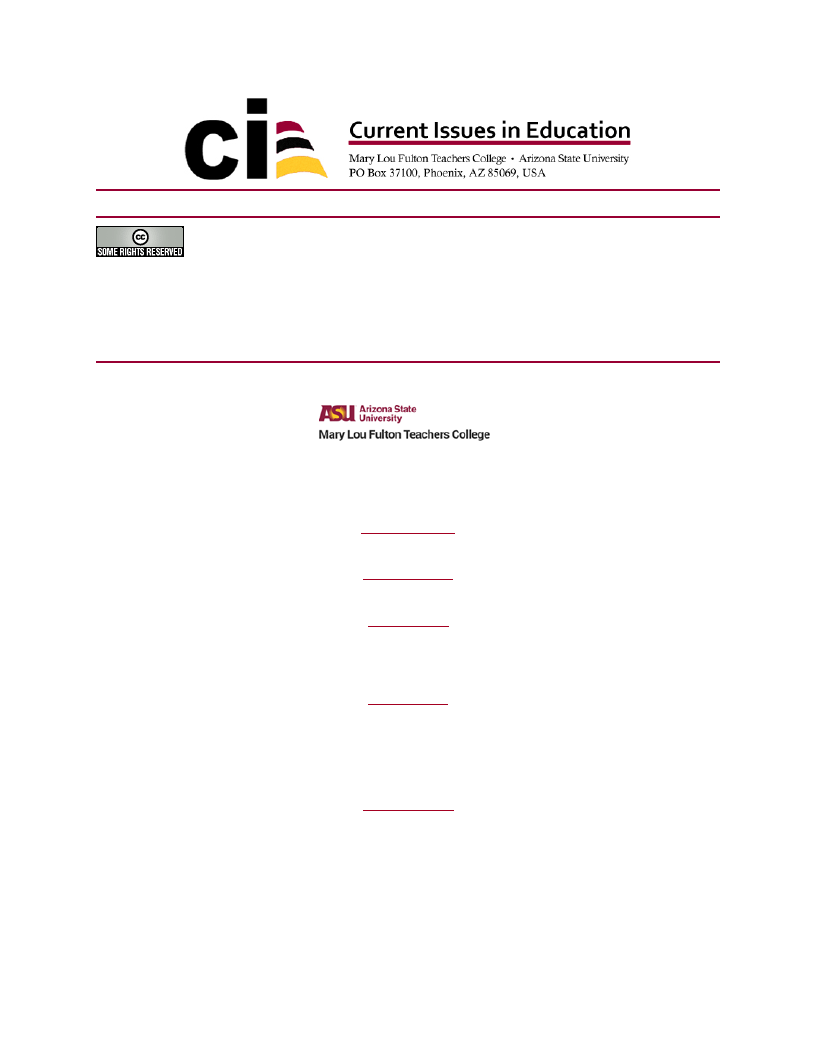
Humanizing Online Teaching
Volume 21, Issue 2
June 18, 2020
ISSN 1099-839X
Readers are free to copy, display, and distribute this article, as long as the work is attributed to the
author(s) and Current Issues in Education (CIE), it is distributed for non-commercial purposes only, and no alteration
or transformation is made in the work. More details of this Creative Commons license are available at
http://creativecommons.org/licenses/by-nc-sa/3.0/. All other uses must be approved by the author(s) or CIE. Requests
to reprint CIE articles in other journals should be addressed to the author. Reprints should credit CIE as the original
publisher and include the URL of the CIE publication. CIE is published by the Mary Lou Fulton Teachers College at
Arizona State University.
Editorial Team
Consulting Editor
Neelakshi Tewari
Executive Editor
Marina Basu
Section Editors
L&I – Renee Bhatti-Klug
LLT – Anani Vasquez
EPE – Ivonne Lujano Vilchis
Review Board
Blair Stamper
Melissa Warr
Monical Kessel
Helene Shapiro
Sarah Salinas
Faculty Advisors
Josephine Marsh
Leigh Wolf
Current Issues in Education, 21(2)
21
